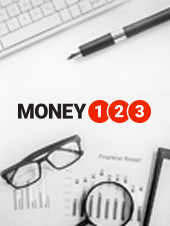Real estate investors are snapping up a bigger share of U.S. homes on the market as rising prices and stubbornly high borrowing costs freeze out many other would-be homebuyers.
Nearly 27 per cent of all homes sold in the first three months of the year were bought by investors — the highest share in at least five years, according to a report by real estate data provider BatchData.
Between 2020 and 2023, the share of homes bought by investors averaged 18.5 per cent.
All told, investors bought 265,000 homes in the January-March quarter, an increase of 1.2 per cent from the same period a year earlier, the firm said.
Despite the modest annual increase, the rise in the share of investor home purchases is more a reflection of how much the housing market has slowed as traditional buyers face growing affordability constraints, according to BatchData.
The U.S. housing market has been in a sales slump since early 2022, when mortgage rates began to climb from pandemic-era lows. Home sales fell last year to their lowest level in nearly 30 years.

Get weekly money news
Get expert insights, Q&A on markets, housing, inflation, and personal finance information delivered to you every Saturday.
They’ve remained sluggish so far this year, as many prospective homebuyers have been discouraged by elevated mortgage rates and home prices that have kept climbing, though more slowly.
As home sales have slowed, properties are taking longer to sell. That’s led to a sharply higher inventory of homes on the market, benefitting investors and other home shoppers who can afford to bypass current mortgage rates by paying in cash or tapping home equity gains.
“As traditional buyers struggle with affordability, investors with cash and financing advantages are stepping in to maintain transaction volume,” according to the report.
BatchData analyzes U.S. home sales records to determine which properties were purchased by investors. These could include vacation homes or rentals, but not a homebuyer’s primary residence.
Investors bought 1.2 million homes in 2024, up from an average of 1.1 million homes a year going back to 2020, according to BatchData.
Even so, investor-owned homes account for roughly 20 per cent of the nation’s 86 million single-family homes, the firm said.
Of those, mom-and-pop investors, or those who own between one and five homes, account for 85 per cent of all investor-owned residential properties, while those with between six and 10 properties account for another five per cent.
Institutional investors that own 1,000 or more homes account for only about 2.2 per cent of all investor-owned homes, the firm said.
And that number could get smaller, amid signs that large institutional investors are scaling back home purchases.
Out of a group of eight of the biggest companies that own and lease single-family houses, including Invitation Homes and American Homes 4 Rent, six sold more homes in the second quarter than they bought, according to data from Parci Labs.
© 2025 The Canadian Press









